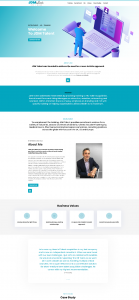— June 17, 2019

ar130405 / Pixabay
Organizations have been using leadership assessments to evaluate potential hires and current employees for quite some time. These tests are available in a variety of forms and can be designed to measure a wide range of personality characteristics. When used responsibly as part of a comprehensive assessment strategy, they provide useful insights to help make better selection and development decisions. However, it is important to be aware of best practices when using these tools.
Benefits of Using Leadership Assessments
They Offer A Different Perspective
Like most assessment tools, a leadership assessment is most effective when combined with other strategies. In the hiring process, for example, a personality test can provide additional data points for evaluating a candidate. A resume only presents information the candidate wants to share about themselves, while an interview may provide a limited picture of what someone will really be like on the job. Personality tests can identify qualities that correlate to high performance in a particular role as well as assess a candidate’s potential cultural fit within an organization. Some tests also identify so-called “leadership derailers,” or personality traits and behavioral tendencies that could potentially disrupt or interfere with the leader’s performance.
Although someone taking a personality assessment test can try to provide the answers they “think” the employer wants to see, a well-designed test takes this into account to consistently deliver results with high reliability and validity. While there is spirited debate among HR professionals about how well such tests predict job success, there is data to suggest that they are more effective than other commonly used tools (traditional interviews and cognitive tests, for example). Of course, even an effective personality assessment test should not be used as the sole determining factor when evaluating a potential candidate. Although they can provide a valuable data point in the assessment process, relying upon them too heavily could lead to biased hiring decisions.
They Improve Employee Development
Understanding the complexities of an employee’s personality can be extremely helpful when designing effective development plans. A personality test can increase self-awareness by revealing certain traits or tendencies, which may enable them to target their development efforts more effectively. Someone who has strong introvert tendencies, for example, may realize they need to do more to push themselves out of their comfort zone in order to step into a leadership role. A more extroverted leader, on the other hand, may recognize that some team members don’t respond well to their outgoing style and require a different form of motivation. Identifying these potential “leadership derailers” can help leadership candidates focus on building the skills and strategies overcome them.
Personality tests in the workplace can help organizations to understand why some employees respond differently to incentives and environments. Placing a team filled with people who aren’t strongly motivated by competition with a leader who thrives on it is a recipe for frustration and disengagement. The data gathered from personality assessment tests can inform the way leaders interact with their teams, enhancing overall effectiveness and promoting a healthier work environment.
Not All Personality Tests Are Created Equal
There’s a reason why advocates of personality tests consistently use the “well-designed” descriptor when discussing their benefits. While many employers use personality tests for assessment purposes, it is important to ensure the test is legally defensible, especially when used for selection decisions. The available testing options range from scientifically rigorous tests to poorly verified tests that don’t reveal much more than a daily horoscope might provide. Compounding the problem is the actual testing administration and the interpretation of the results. In many cases, the tests being used aren’t even designed for business purposes at all (the well-known Meyers-Briggs Type Indicator Test, for instance, was never intended to be used to inform hiring decisions). If an organization is committed to using personality tests in the workplace, it must be sure that the HR professionals using them understand what they are intended to measure and how they should evaluate the results.
Personality tests in the workplace can also perpetuate bias in an assessment process if they’re not used carefully. Employers seeking to hire for cultural fit could potentially use them to “screen out” candidates deemed unsuited for their culture, greatly reducing diversity over time. By the same token, if certain personality traits become associated with leadership success, candidates who lack these traits could miss out on advancement opportunities. It’s important to note that even a well-designed personality assessment test could become a tool for promoting bias because they allow people to believe they’re making decisions objectively.
Organizations can guard against this risk by starting with a well-designed test that provides high levels of reliability and validity. They can then work with the designers to customize the test for the particular job role in question or to account for the organization’s culture. These efforts will enhance the test’s validity, which measures how accurately the test measures what it’s supposed to measure.
As an assessment tool, personality tests can be a tremendous benefit to organizations looking for additional ways to collect valuable data about current and potential employees. At their best, they can provide a useful perspective on the factors that motivate someone’s behavior and influence their view of the world, making them extremely helpful when trying to assess performance potential. But it’s important to remember that they provide only a small piece of a much larger picture. That’s why personality tests in the workplace should always be incorporated into a much broader assessment strategy that leverages multiple tools to create a comprehensive view of performance and development potential.
Business & Finance Articles on Business 2 Community
(28)
Report Post




